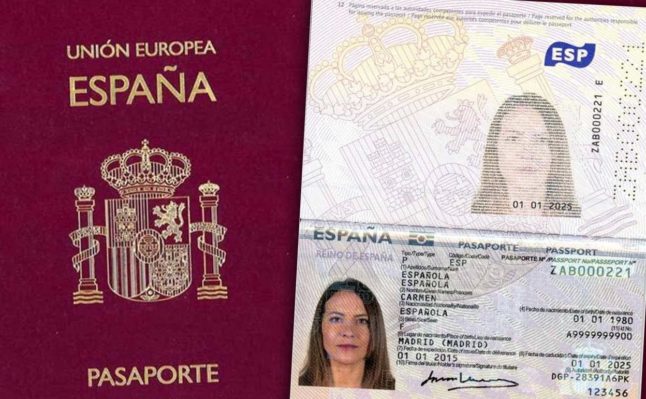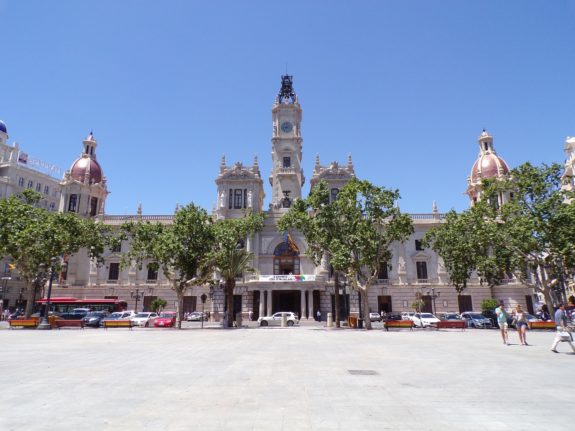The general rule is that if you want to apply for Spanish citizenship, you will have to reside legally in Spain without long absences for ten years.
There are other requirements to apply, including a Spanish language exam and a general knowledge test about Spain, as well as not having a criminal record.
Then there’s the long and arduous waiting time for your application to be processed.
Overall, it can end up taking 12 to 13 years for you to finally get your hands on a Spanish passport and ID.
That’s a very long wait for most people, especially if they want to consolidate their right to live in Spain now and in the future.
However, there are a number of cases in which the wait to get citizenship through residency can be up to four times shorter, even when factoring in the long processing times in Spain.
Being married to a Spanish national – one year to apply
You should obviously be getting married for love, but one of the fastest ways to get Spanish citizenship is by being married to a Spanish national. In this case, you will only be required to reside legally in Spain with your Spanish spouse (in the same home that is) for one year.
A common-law partnership isn’t accepted for this fast-track citizenship application, and again we must stress that ‘green card’ marriages just for the sake of getting nationality are not at all recommendable, as the citizenship application will include an interview in which you will be quizzed at length about your relationship.
A widow or widower can also claim Spanish nationality if their partner was Spanish and at the time of their passing they were still married.
Having the right nationality – two years to apply
None of us get to choose which nationality we initially have, but life’s circumstances may mean that you’re in a better position to apply for Spanish nationality faster.
Nationals from Ibero-American countries where Spanish or Portuguese is spoken (Argentina, Bolivia, Brazil, Chile, Colombia, Costa Rica, Cuba, Ecuador, El Salvador, Guatemala, Honduras, Mexico, Nicaragua, Panama, Peru, Paraguay, the Dominican Republic, Uruguay and Venezuela), as well as nationals of the Philippines, Equatorial Guinea, Andorra or Portugal, can apply for Spanish nationality after legally residing in Spain for two years.
It could be that you’re originally from one of these countries, that you have blood ties in one of them which therefore allows you to claim citizenship there, that you’ve resided long enough in one of those countries to be able to claim citizenship etc. It will all depend on your circumstances and the citizenship laws of said nations, but know that having a passport from one of these countries with historical and linguistic ties to Spain is a way to shorten the residency period before the citizenship application.
There are a couple of other cases to mention – people with Sephardic Jewish ancestry can also apply for Spanish citizenship after two years. Refugees can also do so after five years of residency in Spain.
Being married to the person with the right nationality – three to four years to apply
On a similar note to the section above, if you are married to a person from an Ibero-American country, Philippines, Andorra, Equatorial Guinea or Portugal, you will be able to apply for Spanish citizenship a year after they gained Spanish citizenship themselves. This again depends on both of you legally residing in Spain for the relevant time periods according to Spanish law.
Although you have to factor in that the Spanish citizenship application process takes between one and three years according to most sources (which means that before you apply you would have to wait for three to five years for your spouse to become a Spanish national) it still cuts the waiting period for most nationals by more than half.
Being born in Spain – one year to apply
If you were born in Spain to foreign parents, you can apply for Spanish nationality after one year of legal residency in Spain.
This can happen at any point in your life, so even if you were born in Spain but your parents then left to go back to their home country or elsewhere, you can move to Spain for a year as an adult and apply for Spanish nationality (you will still need to prove legal residency).
Generally speaking, a child that is born in Spain to foreign parents doesn’t automatically get Spanish citizenship, but there are 14 countries which don’t automatically give nationality to the children of their nationals who are born abroad.
These are Argentina, Brazil, Cape Verde, Colombia, Costa Rica, Cuba, Guinea-Bissau, Panama, Paraguay, Peru, Portugal, Sao Tome and Principe as well as Uruguay. If both parents are from one of these countries, Spain will automatically give nationality by presumption to the child in order for them to not be stateless.
Having Spanish blood ties – one year to apply
If one or both or your parents in Spanish, or one of your parents was born in Spain, you can apply for Spanish citizenship after one year of legal residency in Spain.
If one of your grandparents was Spanish, then their son or daughter (your father or mother) can apply for Spanish citizenship and pass it down to you.
The same rules apply to people adopted by those with Spanish nationality or close Spanish blood ties.
There have also been some recent legal changes which allow the grandchildren and great grandchildren of Spanish nationals to directly get Spanish citizenship from their elderly relatives, but this can only be in specific cases such as if they’re the grandchild/daughter of a Spanish woman who married a foreigner before 1978, or the grandchildren of Spanish nationals who renounced their Spanish citizenship.
READ MORE: Spain’s new ‘grandchildren’ citizenship law – What you need to know
Naturalisation letter – potentially zero years to apply
La Carta de Naturaleza, as it is called in Spanish, allows foreign nationals who have done something “exceptional” for Spain to become Spanish citizens immediately, with the waiting times that all other applicants have to endure also non-existent.
Some famous names to have been ‘awarded’ express Spanish nationality include British pianist James Rhodes and FC Barcelona footballers Lionel Messi and Ansu Fati.
The naturalisation letter is controversial and considered unfair by those who have to wait over a decade to get Spanish citizenship, and with good reason. Take the latest example of truly fast-tracked Spanish citizenship: US basketball player Lorenzo Brown, who having never lived in Spain, was granted Spanish citizenship immediately just so he could play for the national team.
This fast-track Spanish citizenship option should not be considered unless you have friends in high places in the Spanish government, as it is awarded by Royal Decree by Spain’s Council of Ministers.
READ ALSO:



 Please whitelist us to continue reading.
Please whitelist us to continue reading.
Member comments